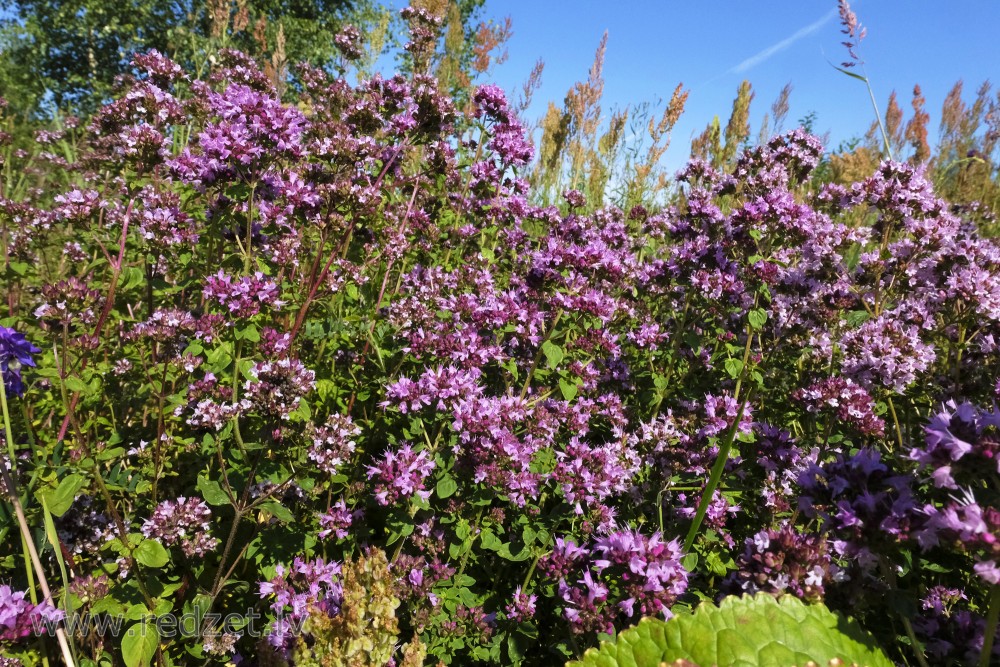Herbs
In general use, herbs are plants with savory or aromatic properties that are used for flavoring and garnishing food, in medicine, or as fragrances. Culinary use typically distinguishes herbs from spices. Herbs refer to the leafy green or flowering parts of a plant (either fresh or dried), while spices are usually dried and produced from other parts of the plant, including seeds, bark, roots and fruits.
Herbs have a variety of uses including culinary, medicinal, and, in some cases, spiritual. General usage of the term "herb" differs between culinary herbs and medicinal herbs; in medicinal or spiritual use, any parts of the plant might be considered as "herbs", including leaves, roots, flowers, seeds, root bark, inner bark (and cambium), resin and pericarp.
Culinary herbs
Culinary herbs are distinguished from vegetables in that, like spices, they are used in small amounts and provide flavor rather than substance to food.
Herbs can be perennials such as thyme or lavender, biennials such as parsley, or annuals like basil. Perennial herbs can be shrubs such as rosemary, Rosmarinus officinalis, or trees such as bay laurel, Laurus nobilis – this contrasts with botanical herbs, which by definition cannot be woody plants. Some plants are used as both herbs and spices, such as dill weed and dill seed or coriander leaves and seeds. Also, there are some herbs such as those in the mint family that are used for both culinary and medicinal purposes.
Medicinal herbs
Some plants contain phytochemicals that have effects on the body. There may be some effects when consumed in the small levels that typify culinary "spicing", and some herbs are toxic in larger quantities. For instance, some types of herbal extract, such as the extract of St. John's-wort (Hypericum perforatum) or of kava (Piper methysticum) can be used for medical purposes to relieve depression and stress.[6] However, large amounts of these herbs may lead to toxic overload that may involve complications, some of a serious nature, and should be used with caution. Complications can also arise when being taken with some prescription medicines.
Certain herbs contain psychoactive properties that have been used for both religious and recreational purposes by humans since the early Holocene era, notably the leaves and extracts of the cannabis and coca plants. The leaves of the coca plant have been chewed by people in northern Peruvian societies for over 8,000 years, while the use of cannabis as a psychoactive substance dates back to the first century CE in China and northern Africa.
The indigenous peoples of Australia developed herbal medicine based on plants that were readily available to them. The isolation of the indigenous people meant the remedies developed were for far less serious diseases, this was from not contracting western illnesses. Herbs such as river mint, wattle and eucalyptus were used for coughs, diarrhea, fever and headaches.
Herbal cosmetics
Originally there was always doubt in ancient societies, especially in the sceptical medium of western traditions, as to the efficacity of herbal medicines. The use of herbal cosmetics dates back to around six centuries ago in the European and Western countries. Mixtures and pastes were often concocted to whiten the face. During the 1940s, herbal cosmetics took a turn with the emerging red lipstick color, with every year gaining a more intense red. Herbal cosmetics come in many forms, such as face creams, scrubs, lipstick, natural fragrances, powders, body oils, deodorants and sunscreens. They activate through the epithelium of sebaceous glands to make the skin more supple. Ayurvedic oils are widely used in India, prized for their natural health-giving properties.
One method and perhaps the best, used to extract natural oils from herbs to make lipstick is partition chromatography. The process involves separation in watery solution, and then the injection of colour under pressure.
en.wikipedia.org
https://en.wikipedia.org/wiki/Herb
Continue reading

